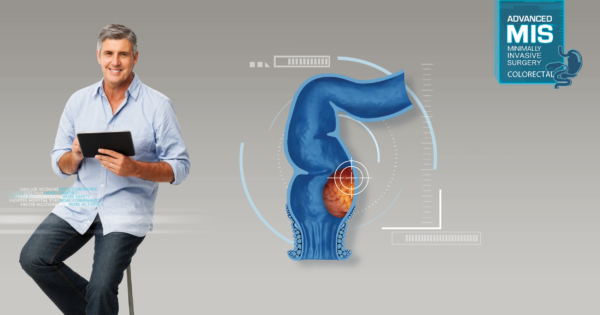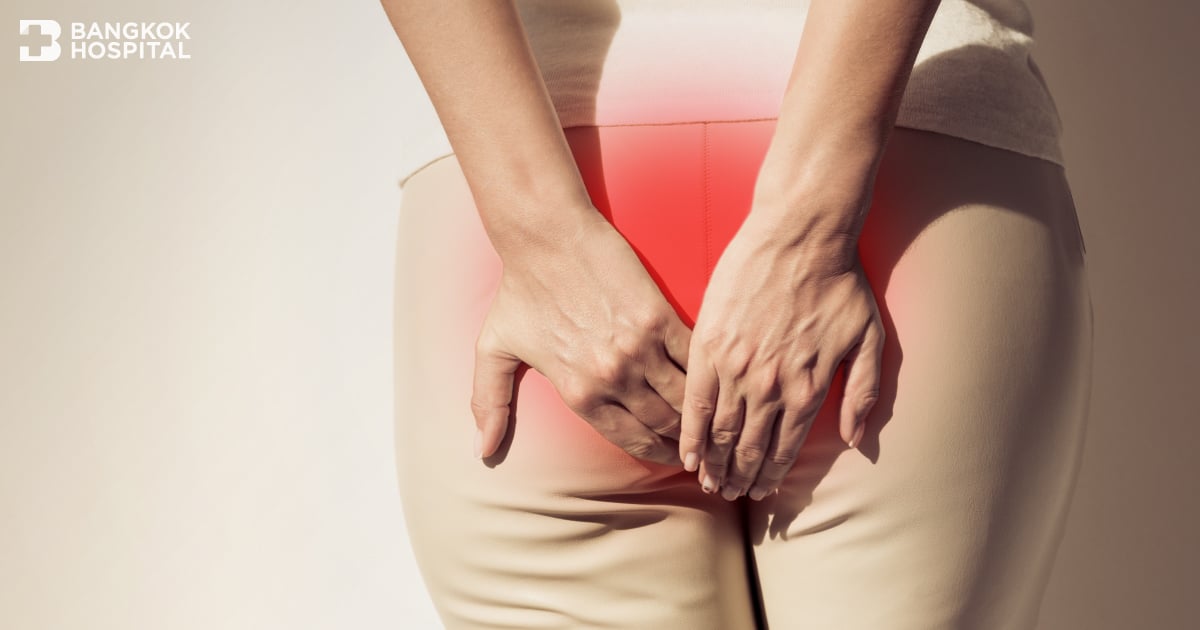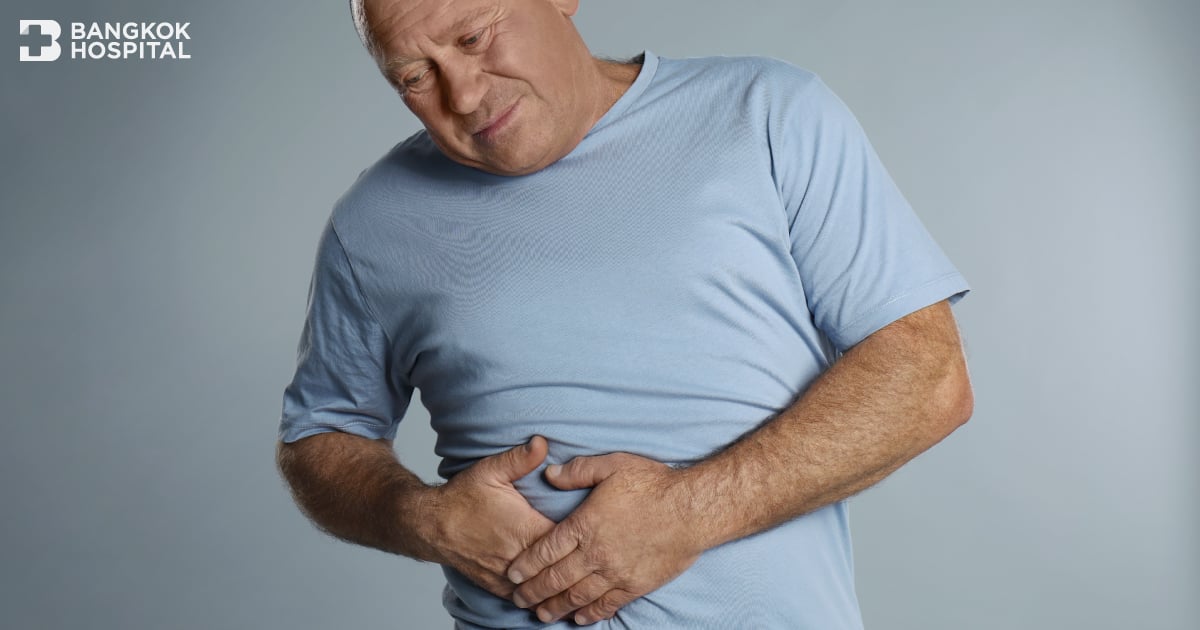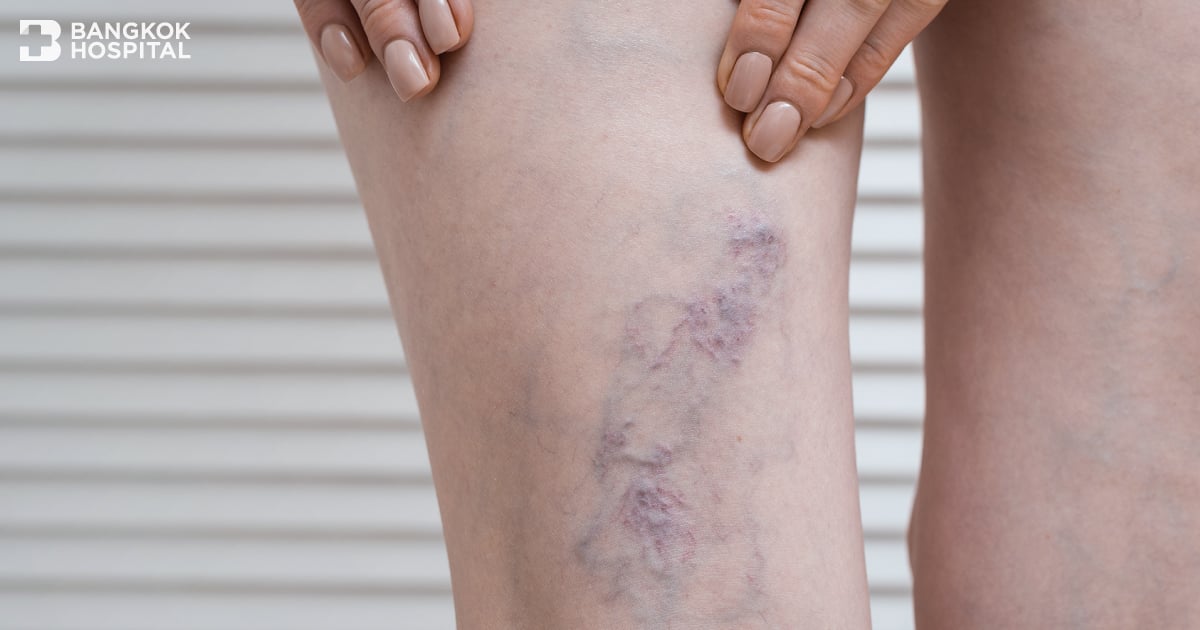Surgical removal of the gallbladder is considered an extremely effective form of treatment for gallstones. In addition to an appropriate surgical procedure conducted by expert surgeon, postoperative care plays an essential role in a fast recovery and quick return to daily life while preserving patient’s quality of life in the long run.
Postoperative care after gallbladder removal surgery (cholecystectomy)
After gallbladder removal surgery, it is highly recommended to follow these advices:
- After the surgery is performed, the patient will be transferred to a recovery room while all vital signs, e.g. heart rates, respiratory rates and blood pressure as well as other relevant parameters, e.g. oxygen saturation level are measured and closely monitored. During a postoperative visit, the surgeon will keep the patient informed about the surgical outcomes and overall conditions. In case any question or concern is raised, the patient shall not hesitate to discuss with the surgeon.
- To minimize the risk of pneumonia that might develop after surgery, the patient is advised to breathe deeply 5-10 times in each hour.
- To promote early mobility, the patient should refrain from lying in bed. Without provoking pain or discomfort, the patient can sit up straight and slowly walk around the bed. Daily activities must be resumed as soon as possible to improve blood circulation and prevent blood clot formation. Under close supervision of rehabilitation specialists, the patient should start walking 5-6 times/day as walking helps to enhance blood flow throughout the body while maintaining normal breathing, gastrointestinal and urinary tract functions which often slow down after surgery.
- If pain develops at the surgical site during changing the position, use hand or pillow to alleviate pain.
- It is important to regularly observe any abnormal signs and symptoms that might potentially indicate postoperative complications, e.g. pain, swelling and redness. If any of these abnormalities arises, keep the surgeon informed immediately.
- If pain develops, do not wait until pain gets worse or becomes unbearable. Pain management can be effectively applied once pain starts.
- For patients who underwent laparoscopic cholecystectomy, it involves insufflation of gas (usually carbon dioxide) into the peritoneal cavity. Therefore, the patients often experience pain or discomfort caused by excess gas, e.g. shoulder pain which normally subsides within 1-2 days. Continuous mobilization and walking can help to mitigate pain.
- Generally, a surgery to remove gallbladder does not bring about any postoperative complications. However, 1-2 follow-up appointments will be scheduled by the surgeon within 2-3 weeks after surgery in order to monitor treatment outcomes and watch out for possible complications.
Recovery at home after surgery
- While resting at home, the patient needs to avoid constipation. To do so, it is suggested to consume high-fiber foods, such as fruits and vegetables to makes stool bulkier and softer, stay adequately hydrated by drinking enough water 8-10 glasses/ day and refrain from straining during bowel movement.
- To continuously promote mobilization and prevent blood clot formation, especially in the legs, the patient should gradually resume daily tasks and activities, starting from getting up and walking.
- Lifting heavy objects (heavier than 6 kg.) and strenuous exercise are not suggested for at least 4-6 weeks after surgery.
- Keep the surgical wound (incision) clean and follow surgeon’s instructions on how and when to replace the bandage.
- It seems common to have some minor bleeding from the incision. However, if it bleeds too much and the incision becomes moist, immediate medical assistance must be sought.
- To prevent wound irritation that largely interrupts wound healing process, avoid wearing tight or coarse clothes.

Diet modification
The gallbladder is a small pouch located under the liver. Its main function is storing bile produced by the liver. Some people might be concerned about foods after having their gallbladders surgically removed. In fact, most patients who underwent cholecystectomy can live worry-free regarding their daily diet as the liver still produces adequate amount of bile which is necessary for the digestive process. Instead of having bile stored in the gallbladder, once your gallbladder is removed after cholecystectomy, the bile produced by the liver flows directly into the small intestine, allowing continued digestion of fats. Nevertheless, the amount of fat intake each meal profoundly affects the digestion process. Despite there is no standard diet that people should follow after gallbladder removal surgery, it is best to limit fatty and greasy foods. An excess fat can potentially cause fat indigestion manifested by dyspepsia, bloating and diarrhea, especially a few months after surgery. To maintain a good health after gallbladder surgery, it is vital to strictly follow these eating tips:
- Gradually get back to healthy eating habit: A day after surgery, the patient is recommended to start eating a clear fluid diet and soup. During the first week after surgery, easy-to-digest food should be taken. Hereafter, regular diet can be gradually resumed while watching for bloating and abdominal discomfort.
- Consume smaller portions of healthy food but more often: Rather than having 3 big meals a day, it is necessary to manage to split into 4-6 mini-meals each day in order to enhance a proper digestion. As the limited amount of bile, late meal at night that likely causes bloating and stomach discomfort must be avoided. Protein-enriched diets, e.g. fish, white egg, tofu and low or non-fat dairy products should be regularly taken along with vegetable, fruits and whole grains. Caffeine-containing beverages, such as coffee and tea as well as spicy food should also be avoided.
- Limit fatty and greasy food to minimize bloating and diarrhea: As the body still requires essential fatty acids derived from food, the patient can gradually start eating high-fat food in limited amount. Consuming excessive fat might lead to fat indigestion which often causes stomachache, bloating or flatulence and diarrhea. Healthy fat can be obtained from fish and vegetable oil with unsaturated fatty acids. Excess consumption of greasy food fried or cooked with excess oils, cheese, pizza and other food containing trans fat must be strictly avoided. The average amount of dietary fat that the patient should consume should not exceed 30% of the recommended amount each day (60 grams of total fat). It remains important to read the nutrition facts label before consuming any food. A low fat diet must contain no more than 3 grams of fat per each serving of food.
- Eat more of high-fiber diet: To improve gastrointestinal motility, high-fiber diet can be gradually consumed over weeks. Nonetheless, eating too much of fiber rich diet that produces gas as a byproduct can also cause diarrhea, abdominal pain and bloating due to an excess gas.
- Write a food diary to keep tracking of your food intake: Keeping a diary of what you eat and how you feel while eating can help the tracking of healthy eating habit. By doing so, the patients learn about what and how much they can eat without triggering any abdominal symptoms. Some patients can resume their regular diet a month after surgery.

Being physically active
After surgery it is important to take an active role in the recovery phase. Preoperative and postoperative rehabilitation care will be conducted by rehabilitation specialists and multidisciplinary team aiming at improving patient’s quality of life while accelerating recovery to achieve a quick return to daily life and activities.
- Leg exercise: After being discharged from the hospital, early mobilization is the key to attain a faster recovery. These include walking around the house and climbing stairs while holding onto the handrail. Prolonged immobilization or bed rest without movement poses a significant risk of blood clot formation due to an impaired circulation. In unfortunate cases, blood clots formed inside the blood vessels might travel across the body and block the blood supply to a particular organ, such as the arteries in the lungs (pulmonary embolism). To improve blood circulation and prevent clot formation in the calf, regular movements of the feet and legs, e.g. ankle rotation, ankle stretching and knee lifts are highly advised.
- Deep breathing: Assisted breathing device (an incentive spirometer) should be continuously used for 3-5 days as advised. To restore lung function and prevent lung infections, deep breathing, 4-5 times in each hour, is extremely important. If experiencing cough or sneeze, the patient may gently hold the pillow against the abdomen to counteract any jolting from cough, sneeze or movement. It helps mitigate pain since it holds the incision and sensitive skin surrounding the incision firmly in place.
- Getting in and out of bed: Getting out of bed too quick after surgery might lead to insufficient blood supply to the brain, causing a sudden dizziness and fall. To get out of bed, roll onto your side, bend the knees until the legs are hanging over the side of the bed, then use the arms to lift the upper body up and push off with the arms to stand up.
- Doing appropriate activities: In the first 2 weeks after surgery, the patients is not suggested to do strenuous activities or physical exertion. Short-distance walking might be advised. Driving is not recommended for at least 5-7 days after surgery. Before driving off, assessing the pain while fastening the seat belt, pushing hard on a brake and controlling the steering wheel. After 2 weeks, physical activities, e.g. riding a bicycle and jogging can be resumed as usual. Lifting heavy objects (heavier than 6 kilograms) must be avoided as it substantially aggravates pain. After 1 month, other physical exertion and workout, e.g. lifting objects, moving furniture and mowing the lawn can be gradually resumed.
- Holistic rehabilitation care: For patients who have underlying conditions or who are physically active, e.g. athletes, a holistic rehabilitation program performed by the rehabilitation specialists and a multidisciplinary team to achieve a full recovery within the shortest period of time might be further required.

Practicing good sleep hygiene
To maintain a regular sleep routine after surgery, following these tips seems beneficial:
- Getting enough sleep: After surgery 1-2 weeks, it is crucial to maintain adequate sleep up to 8-10 hours/day for enhancing healing process and recovery. Poor sleep habits, such as having an irregular sleep schedule or consuming too much caffeine or alcohol can interfere with sleep quality. These also include having a late sleep pattern or drinking too much of water before going to sleep. If pain develops, painkiller medications can be taken as prescribed. In most cases, it takes 5-7 days until a full recovery.
- Shifting the focus: Instead of paying attention only to discomfort feeling after surgery, changing interests to pleasant hobbies or leisure activities, e.g. reading books, listening to music, playing games and social media engagement can largely relieve stress and anxiety.
- Guided imagery for relaxation: Guided imagery is a simple relaxation technique that help to quickly and easily manage stress, reduce tension and alleviate pain. It is an intentionally thought of a peaceful place or scenario along with closing eyes, deep breathing and muscle relaxation, allowing the body to react to your own thoughts.
Staying away from aggravating factors
To remain as healthy as possible after surgery, it is highly recommended to:
- Stop smoking: Smoking increases the risk of problems during and after surgery. Quitting smoking at least 3-6 weeks before surgery can significantly decrease the rates of complications related to the surgery. Without smoke cessation prior to surgery, the anesthesiologists face additional challenges to control respiratory function while under the anesthesia, fighting against lungs compromised by smoking. This might lead to an increased risk of anesthesia complications. More importantly, besides poor wound healing process, smoking impairs heart function and disturbs normal heart rhythms, therefore it substantially increases risk of cardiac arrest or heart attack while operating.
- Avoid unhealthy diets: To prevent blood sugar fluctuations before and after surgery, the patients need to refrain from consuming high sugar diet. Electrolyte drinks containing sodium should be limited as it results in a fluid buildup and swelling. Unhealthy diet, e.g. raw, uncooked and fermented food as well as alcoholic beverages must be avoided.
- Relieve stress and anxiety: Not only physical health, but mental health also plays an important role in a successful surgery. If there is any concern related to surgery including pain management, discuss thoroughly with the surgeon. It remains crucial to stay worry-free and manage stress efficiently while following all instructions suggested by the surgeon.
Abnormal signs and symptoms that need medical attention after surgery
If any of these warning signs arise after surgery, immediate medical assistance must be sought:
- Persistent and severe abdominal pain
- Severe nausea or vomiting
- Yellowing of skin and eyes
- Absence of bowel movement longer than 3 days after surgery
- Unresolved diarrhea longer than 3 days after surgery
- Fever (body temperature > 38’c)

The ERAS Program – An accelerator of rapid recovery after surgery
Enhanced Recovery after Surgery Program or ERAS refers to patient-centered, multidisciplinary team developed pathways for surgeries to reduce the patient’s surgical stress, promote early mobilization, re-establish oral feeding, optimize physiologic function and alleviate pain or discomfort. Conducted prior to, during and after surgery, the ultimate goal of ERAS is to achieve a fast recovery while minimizing pre- and postoperative complications. This significantly leads to a shorter hospital stay and a quick return to daily life and activities with a full range of motion.
Supported by cutting-edge technology and appropriate surgical approaches, the ERAS Program is conducted by a multidisciplinary team, consisting of surgeons, rehabilitation and nutrition specialists, physiotherapists, nurses and pharmacists highly specialized in surgical care.
As patient-centered approach, the ERAS Program has been designed to improve the recovery process throughout patient’s journey. The program starts from a full medical examination and assessment of medical conditions. In high-risk patients, e.g. elderly patients or patients with multiple underlying diseases that could affect the surgical outcome, surgical planning will be further discussed among different specialists in order to design the best possible procedure suitable for each individual. Pre-operative assessment will be conducted and relevant care, e.g. treatment of hematological problems such as anemia, nutrition support, quitting smoke, blood sugar control will apply, ensuring a physical fitness prior to surgery. Different exercises and pre-rehabilitation programs to strengthen the muscles will be introduced to each individual under close supervision of internal medicine and rehabilitation specialists. In addition, the pharmacist needs to review all current medications and supplements that might affect patient’s safety during surgery. To maintain a normal physiological function, fasting will be required as minimal as possible.
Due to advanced technology in minimally invasive surgery, laparoscopic cholecystectomy (LC) has become a gold standard among eligible cases. Cutting-edge technology used in LC involves the use of three-dimensional (3D) HD vision system and 4K ultra-high definition which provides detailed images of gallbladder and surrounding organs in all dimensions. Furthermore, indocyanine green (ICG) fluorescence imaging technology can clearly view the boundary of lesion and adjacent organs during the operation, leading to less damages to the surrounding tissue. With smaller incisions, in comparison to conventional approach, LC results in less pain, fewer risks and postoperative complications, faster recovery time and shorter hospital stay.
Concerning pain control and prevention of undesired effects after surgery, the anesthesiologist manages pain that widely varies from person to person by using multimodal analgesia while reducing side effects of anesthesia and morphine drugs. Moreover, other related issues, including nausea and vomiting induced by anesthesia, optimal body temperature and fluid administration will be efficiently managed by a multidisciplinary team. ERAS program also recommends early removal of urinary drainage to reduce the risk of catheter-associated urinary tract infections. Monitored and advised by nutrition specialists, early oral feeding should be applied as soon as possible, enabling an improved bowel movement.
Postoperative immobility can potentially induce local venous stasis caused by accumulation of clotting factors, resulting in blood clot formation which is firmly associated with an increased risk of venous thrombosis – blockage of a vein caused by blood clot (thrombus). Delayed mobilization has been also linked with impaired lung function and respiratory complications.
ERAS program advocates early mobilization starting on the first day after surgery to counteract catabolic changes and maintain muscle strength. Prior to hospital discharge, postoperative instructions, including wound care and home medications will be given. It is important that the patients need to follow post-operative appointments as scheduled, enable the surgeon to monitor surgical outcome and check on recovery. For emergencies, patients can reach the hospital around-the-clock via given contact.
ERAS program is considered a multimodal perioperative care pathway designed to achieve early recovery after surgical procedures. The key elements of ERAS are comprised of patient and family education, general health optimization prior to operation, pre-rehabilitation, minimal fasting, multimodal analgesia with appropriate use of opioids, early mobilization, early removal of urinary drainage, quick initiation of oral feeding and fast recovery. Apart from excellent surgical outcome with less postoperative complications, patient’s quality of life and a quick return to normal activities are taken into the consideration.














